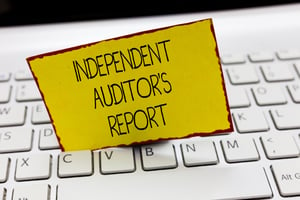Increasing the efficiency of your Quality Management System (QMS) should be a no-brainer. When you...
What is your QMS Strategy?
Many startups mistakenly believe that creating a successful QMS strategy means building complex solutions to satisfy all elements of ISO 9001:2015 (or similar systems). Such an approach can be overwhelming, time-consuming, and even counter-productive. Quality management systems should be tailored and scaled to the specific business needs.
Ultimately a complete QMS should include:
- Quality policy and quality objectives
- Quality manual
- Procedures, instructions, and records
- Customer feedback collection and integration
- Internal audit system
- Document controls
- Data collection procedures to monitor customer satisfaction and supplier performance
- Product and process monitoring system
- A system of preventative and corrective actions
- Nonconformity control
- Trend monitoring
To ensure implementation of a successful quality management system, you need to start with a QMS strategy and then deploy an efficient QMS explicitly tailored to your needs.
What is a QMS?
A quality management system (QMS) is a process-based approach to maintaining quality control and quality assurance. By designing an efficient QMS for your company, you ensure:
- Smooth workflow
- Customer satisfaction
- Compliance
- Product quality
- Operation efficiency
- Improved risk management
- Fewer errors
- Consistent control of business processes
- And much more
While each company designs its own quality management system, specific regulations, standards, and guidelines exist to make sure none of the important elements is left out. For instance, 21 CFR Part 820 describes the FDA requirements for a medical device QMS and ISO 13485 includes standards for building a QMS to support CE marking of medical device.
What is a QMS Strategy?
A QMS strategy is the plan and processes that enable a business to achieve compliance with applicable requirements, in a manner that is appropriate for that particular business. The key term in this definition is "appropriate." It's not always appropriate to implement a highly-detailed, full-blown QMS. Your QMS strategy should depend on various factors including risk, services or products provided, resources, and business trends.
The QMS strategy depends on your company's current needs and goals. You want the required pieces of QMS to be effective to ensure compliance for current activities. The right strategy ensures flexibility of your QMS and minimizes non value-added and cumbersome elements.
By designing an efficient QMS strategy, you can simplify QMS implementation and ensure its adaptability to the ever-changing industry requirements, FDA regulations, audit results, and customer feedback.
What is an Example of a QMS Strategy?
To gain a better understanding of how important a QMS strategy can be for your business, let's discuss an example:
Consider a startup involved in a potential drug development process. The drug is currently undergoing toxicity testing. This company’s main business goal is to reach Phase II human trials (reaching Phase II clinical trials is considered "proof of concept"). Once they have proof of concept, a larger company is likely to be interested enough to buy the startup out.
Since the business’s main goal is to complete Phase II clinical trials, QMS elements related to customer feedback or pharmacovigilance are not applicable at this stage. Following any non-applicable ISO 9001 or ISO 13485 requirements would not be value-added. A QMS strategy for this startup would focus on other aspects of quality management such as document control and non-conformity controls.
However, if the startup wants to finish all trials and go to the market with their product, they require a different QMS strategy that involves customer feedback, for example.
How do You Implement a QMS Strategy?
The best way to build and deploy a quality management system is to create one layer or element at a time. You can start with a set of basic Standard Operating Procedures (SOPs) that must always be in place.
SOP Development
SOPs are the glue that holds the quality management system framework together. They define tools, methods, responsibilities, and metrics for each step of the product development cycle.
The SOP development process begins by identifying required or applicable SOPs, their authors, reviewers, and approvers. All processes that have an impact on product quality should be documented by written procedures.
SOP Layering
SOP layering involves creating basic SOPs (first layer) and then developing SOPs (second layer) for each of the basic SOPs. Next, you would need to develop SOPs (third layer) for the second layer of SOPs, and so on.
For example, after listing basic SOPs, you need evaluative SOPs on who creates, approves, and revises these basic SOPs. Then, you need SOPs to document employee training on evaluative SOPs.
If you plan to support IND (investigational drug) submission then you need to add SOPs related to generating toxicology and animal data.
Creating layers one by one can simplify the QMS development process and help you avoid unnecessary SOP creation.
The lack of written SOPs is one of the most frequently cited issues during regulatory inspections (1). By creating an efficient SOP structure, you can avoid data and document gaps.
You can adjust the mix of SOPs depending on your current needs and requirements.
Designing an Efficient QMS Strategy from Scratch
Even when you know the QMS basics, it can be hard to develop an efficient QMS strategy. You could get stuck following unnecessary guidelines, overwhelming your team, and straying from core business tasks.
If you don't have experience booting up a QMS, it can be tough to know where to start and where to end. To learn more about QMS development and other aspects of regulatory affairs, please subscribe to our blog.




